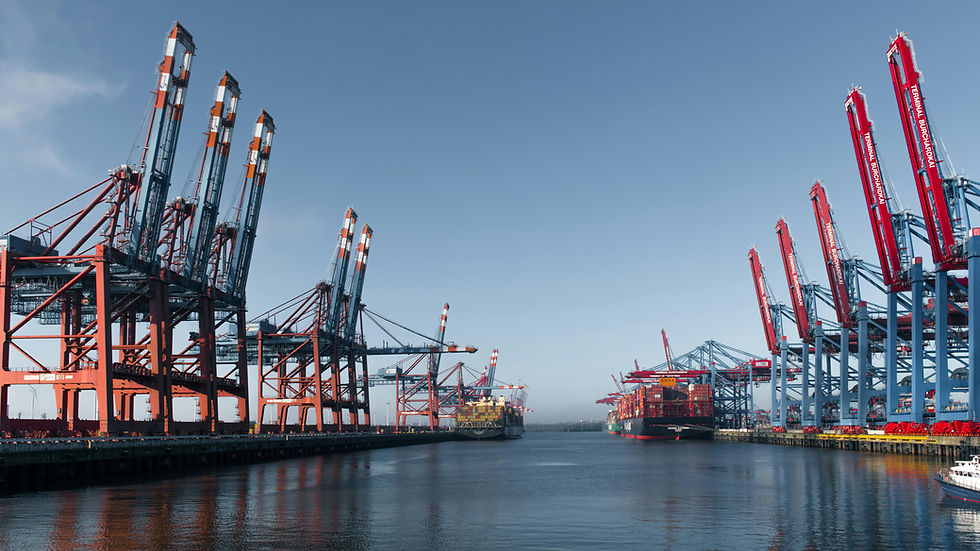Understanding Ocean Freight: What You Need to Know
- MDXpress

- Jul 31
- 3 min read
Ocean freight. It’s the backbone of global trade, moving the goods that keep economies running and shelves stocked. But what does it involve, and how can it benefit your business? Let’s dive into the details to help you navigate this essential shipping method.

What Is Ocean Freight?
Ocean freight refers to the transportation of goods by sea, typically in large containers, across international waters. It’s the preferred method for shipping bulky, heavy, or large quantities of goods that don’t require rapid delivery.
From raw materials like oil and grain to finished products like electronics and clothing, ocean freight handles a staggering variety of cargo. It’s cost-effective and efficient, making it a vital part of the supply chain for businesses worldwide.
Key Features of Ocean Freight
Cost-Efficiency: Ocean freight is often more economical than air freight, especially for large shipments.
Capacity: Ships can transport massive volumes of cargo, making them ideal for bulk goods.
Global Reach: With ports in nearly every country, ocean freight provides unparalleled international connectivity.
Eco-Friendly: Compared to other modes of transport, ocean freight has a lower carbon footprint per ton of goods moved.
Why Choose Ocean Freight?
For businesses, the advantages of ocean freight are clear:
Economies of Scale: Shipping large volumes reduces the cost per unit, making it ideal for bulk goods.
Versatility: Whether it’s perishable goods in refrigerated containers or oversized cargo, ocean freight can handle it all.
Reliability: With well-established routes and schedules, ocean freight ensures consistent delivery.
Customisation: Services like Full Container Load (FCL) or Less than Container Load (LCL) offer flexibility based on shipment size and budget.

Industries That Benefit Most from Ocean Freight
Ocean freight is indispensable for numerous industries, including:
Manufacturing: Transporting raw materials and finished goods across global markets.
Retail: Ensuring shelves are stocked with imported products, from fashion to electronics.
Construction: Moving heavy machinery, steel, and other building materials.
How Ocean Freight Works
The process of ocean freight involves several key steps:
Booking and Planning: The shipper books space on a vessel and arranges for container loading.
Export Haulage: Goods are transported from the shipper’s location to the port.
Customs Clearance: Necessary documentation is reviewed and approved.
Sea Transit: Containers are loaded onto the vessel and shipped to the destination port.
Import Procedures and Haulage: Goods pass through import procedure, before being transported from the port to the final destination.
Environmental Considerations in Ocean Freight
Sustainability is a growing focus in the logistics industry, and ocean freight is no exception. Shipping companies are adopting cleaner fuels, optimising routes, and investing in energy-efficient vessels to reduce emissions. For businesses looking to minimise their environmental impact, ocean freight is a greener option compared to air transport.
Cleaner Fuels: Many carriers are transitioning to low-sulfur and alternative fuels to reduce greenhouse gas emissions.
Energy-Efficient Vessels: New ship designs and retrofits are improving fuel efficiency, reducing overall environmental impact.
Optimised Routes: Advanced software helps identify the most efficient routes, saving fuel and time.
Carbon Offsetting: Some providers offer carbon-neutral shipping options, allowing businesses to offset their environmental footprint.
Challenges and Solutions in Ocean Freight
While ocean freight is highly efficient, it’s not without its challenges. Common issues include port congestion, unpredictable weather, and lengthy transit times. However, innovative solutions are addressing these concerns:
Smart Ports: Digital technologies streamline operations and reduce delays at ports.
Advanced Forecasting: Weather and demand forecasting tools help carriers plan better and avoid disruptions.
Improved Tracking: Modern tracking systems provide real-time updates, ensuring transparency and better planning.
Collaborative Logistics: Partnerships between carriers and shippers enhance efficiency and reduce costs.
The MDXpress Ocean Freight Advantage
At MDXpress, we combine decades of experience with cutting-edge technology to deliver seamless ocean freight solutions. Whether you’re shipping FCL, LCL, or specialised cargo, we tailor our services to meet your exact requirements.
Our global network and robust partnerships with carriers ensure competitive rates and reliable schedules. From documentation to customs clearance, we handle the complexities so you can focus on your business.
Ready to Ship?
Let MDXpress simplify your ocean freight needs. Whether you’re moving goods across continents or managing regular shipments, our team is here to help. Request a quote today and set sail with confidence.



